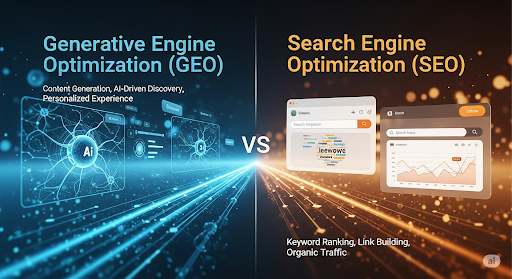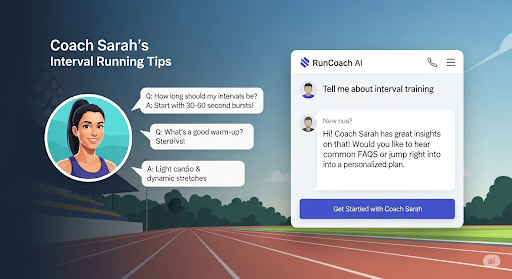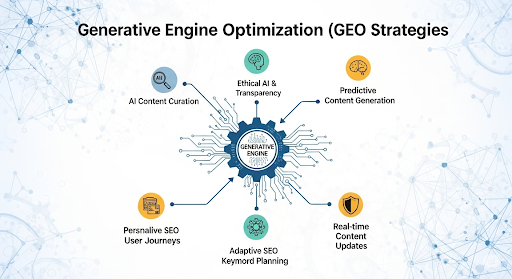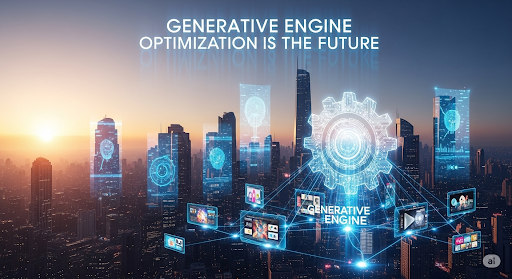Generative Engine Optimization (GEO): The 2025 Guide to Dominating AI Search and Boosting Your Visibility
Introduction: Goodbye, Old SEO—Hello, GEO!

Remember a time when ranking 1 on Google meant you’d “won the internet”? In 2025, things have changed. Now, that juicy web traffic flows less from traditional search results and more from answers created by AI-powered engines—think ChatGPT, Google’s SGE, Perplexity, Gemini, and countless other smart bots. This shift has given rise to a fresh, crucial practice: Generative Engine Optimization (GEO).
If you’re curious about how to have your brand, website, or content suggested by these AI helpers—and not drowned out in a sea of lifeless, generic abstracts—this handbook is for you. We’ll distill all marketers need to know, in plain language and with heaps of practical tips, to assist you in standing out in the search future.
What is Generative Engine Optimization?
Generative Engine Optimization (GEO) means fine-tuning your content so that it gets cited, recommended, or summarized by AI-based search platforms and chatbots. Instead of chasing only “blue-link” rankings in Google, you’re optimizing for how AI finds, understands, and serves up your content directly to users.
So why should we care? Because increasingly, people are asking questions directly within AI tools—bypassing search results altogether. And when the robots construct a response, they draw from whatever high-quality content they can rely on and process easily. You don’t just rank better if you crack GEO… you become the source the AI bots reference, quote, and link to.
Why is GEO the Future of Digital Visibility?
- Search powered by AI is taking off. By 2026, conventional search volume will decline by as much as 25%, with the traffic shifting to AI search engines and conversational search assistants.
- Convenience matters to users. Individuals today crave fast, straightforward answers—without having to navigate 10 sites.
- Optimize early, win big. Being fast to GEO puts you way ahead of your competition before your market reaches the same level.
- It’s not just geeky marketers proclaiming this. Large industry reports, Google’s blog, and innovative brands are all shifting towards GEO currently.
How Does GEO Work?
Rather than searching for keywords, AI (such as ChatGPT or Google’s SGE) attempts to “understand” your content:
- It seeks out structured answers, plain formatting, and language that humans use.
- It looks for trust signals—actual expertise, links, sources, quotes, and fresh info.
- It considers context, not mere keywords—a technique known as “entity-based optimization.”
- It can read not only words, but tables, lists, Q&As, images, even audio.
– The change: Rather than posing, “How do I rank for this keyword?” you must ask, “How do I get my content to be the best answer to this query, when an AI is selecting what to present?”
GEO vs. SEO: What's Different?

| SEO (Search Engine Optimization) | GEO (Generative Engine Optimization) |
|---|---|
| Ranks search engine webpages | Puts your content on the radar of AI engines |
| Focus on backlinks & keywords | Focus on relevance, answers, and structure |
| Targets top SERP positions | Targets being cited or summarized by AI |
| Measured by page visits | Measured by citations & direct engagement |
| Relies on links for authority | Relies on trustworthy, clear information |
Actionable GEO Strategies (With Simple, Examples)
- Answer Questions Clearly and Directly
AI robots adore plain-language answers. Employ H2/H3 headings such as “What is GEO?” or “How does GEO function in 2025?” and present brief, welcoming responses at the top.
- Employ Structured Formats (Lists, FAQs, Tables)
Bullets, step-by-step numbers, and summary boxes allow AI to quickly extract your information.
- Write Like a Human, Not a Robot
Skip the keyword stuffing! Use simple, conversational words—just like you’d explain to a smart friend.
- Cite Sources and Show Proof
Back up claims with stats, research, and quotes. AI weighs trusted sources heavily.
- Keep Content Fresh
AI bots only want the newest, most relevant data. Update your pages and include “last updated” notes.
- Add Schema Markup and Structured Data
A touch of tech magic: include schema in your site, which allows AI search engines to “read” your information with accuracy (e.g., event dates, prices, reviews).
- Optimize for Voice and Conversational Search
Increasingly, people are typing in their questions using “Hey Siri…” or voice-commanded devices. Write responses that read naturally aloud.
- Optimize for Visual and Multimodal Search
Use pictures, alt text, concise captions. Some AI robots draw on images and words.
- Demonstrate True Expertise & E-E-A-T
Google and AI consider Experience, Expertise, Authoritativeness, and Trustworthiness (E-E-A-T). Promote your credentials, reviews, awards, and full case studies.
- Examine and Monitor Your GEO Visibility
Try tools like AthenaHQ, Goodie AI, or even Search Console’s new AI features to see how often you’re referenced in generative responses.
GEO in Action: Real-Life Case Examples
Case 1: Local Restaurant Wins with GEO

A Mumbai pizza parlor begins writing “best methods of making crispy pizza at home” on its blog, employing step-by-step tips and images. When customers in 2025 ask Google SGE or ChatGPT for pizza advice, their blog is drawn into responses—propelling new followers even without a Google top ranking!
Case 2: Fitness Coach Expands Rapidly With GEO-Based Content

A personal trainer responds to “What’s the quickest way to begin interval running?” as an isolated Q&A, regularly updates the information, and includes first-hand reviews. Chatbots start showcasing her snippet, and she receives dozens of new customers every month through AI suggestions.
GEO Keyword Strategies for 2025

Target long-tail, natural, and question-based keywords.
Rather than placing “generative engine optimization” in every nook and cranny, incorporate phrases humans actually speak, such as:
– “How do I SEO my content for AI search?”
– “What is GEO in marketing?”
– “How to get included in AI search bots”
– “SEO vs GEO for business in 2025”
Jump on popular keywords:
– “AI search engine optimization”
– “Conversational search ranking”
– “Get referenced by ChatGPT”
– “Increase visibility in generative search”
– “AI-powered content marketing”
– “Schema markup for AI engines”
Step-by-Step Guide to GEO-Optimize Your Content
- Identify trending AI search questions in your topic.
– Utilize resources such as AnswerThePublic, ChatGPT, Google’s “People Also Ask.”
- Pick questions that have high intent to search and low competition.
- Make content have obvious Q&A format.
– Place straightforward, brief answers under distinct headings.
- Elaborate with supporting facts, lists, and evidence.
- Include schema markup, alt text, and revise meta descriptions.
- Quote your sources and use stats where applicable.
- Regularly update and refresh your pieces.
- Get ChatGPT, Perplexity, or Google SGE to summarize your material—see what gets pulled and optimize accordingly.
- Monitor mentions of your site in AI-generated responses using AthenaHQ or similar software.
10. Do it again! GEO isn’t a set-and-forget field; it’s ongoing and dynamic.
Must-Have GEO Tools for 2025
- AthenaHQ : Tracks your brand’s visibility on the big generative engines.
- Goodie AI: Offers optimization advice and citation tracking.
- AnswerThePublic: Discovers the actual questions users are searching for (important for GEO).
- SEMrush & Ahrefs: Now provide AI-centered keyword and entity research.
- Google Search Console (AI Reports): New capabilities monitor generative snippet origin.
Pitfalls to Avoid in GEO
- Over-optimizing with repetitive phrases. Sounds automated, damages engagement.
- Using only outdated keyword lists. AI is interested in meaning, not word matching.
- Forgetting updates. Generative engines devour new material—’set and forget’ is gone.
- Overlooking technical fundamentals. Schema and readable formatting matter, even for AI engines.
- Chasing traffic with clickbait. It might deceive some bots, but intelligent AI—and your readership—will pass over low-value or deceptive content.
GEO and the Future: What's Next?
- AI engines will become smarter, more visual, and more multimodal. Optimize content for voice, image, and even video-based searches.
- Citation and trust will drive visibility. Bots will prefer richer, more trustworthy sources to generic content.
- Personalization rules. AI ever-more tailors responses to user behavior; adapt by targeting niche audiences and “entity-level” authority.
Frequently Asked Questions
Not completely—SEO fundamentals (good content, solid site architecture, authority) still count. But GEO is how you make it up the ranks when AI is deciding what information makes the cut.
You’ll have some fundamentals—implementing schema, refreshing meta tags, organizing content—but there are tools available that make it available to novices.
Search for references or mentions in AI platforms (Goodie AI, AthenaHQ) and monitor growth in referral traffic from emerging engines.
Yes. Keeping up with the times and constantly updating will position you above competitors.
Conclusion - Prepared to Win the AI Search Game

SEO brought us this far—but in 2025 and beyond, Generative Engine Optimization (GEO) is the key to real digital visibility. With more individuals than ever using intelligent assistants and AI-powered chatbots, engaging your content for human connection and machine comprehension will differentiate you.
Begin with straightforward, simple answers. Establish trust and authority. Employ smart formats and update your content regularly. GEO is not a fresh buzzword—it’s your key to being the brand AI—and human people—cannot afford to overlook.
Are you ready to future-proof your digital marketing and become tomorrow’s go-to source of answers? Begin today, and prepare to find yourself everywhere your users look—regardless of how they search.
